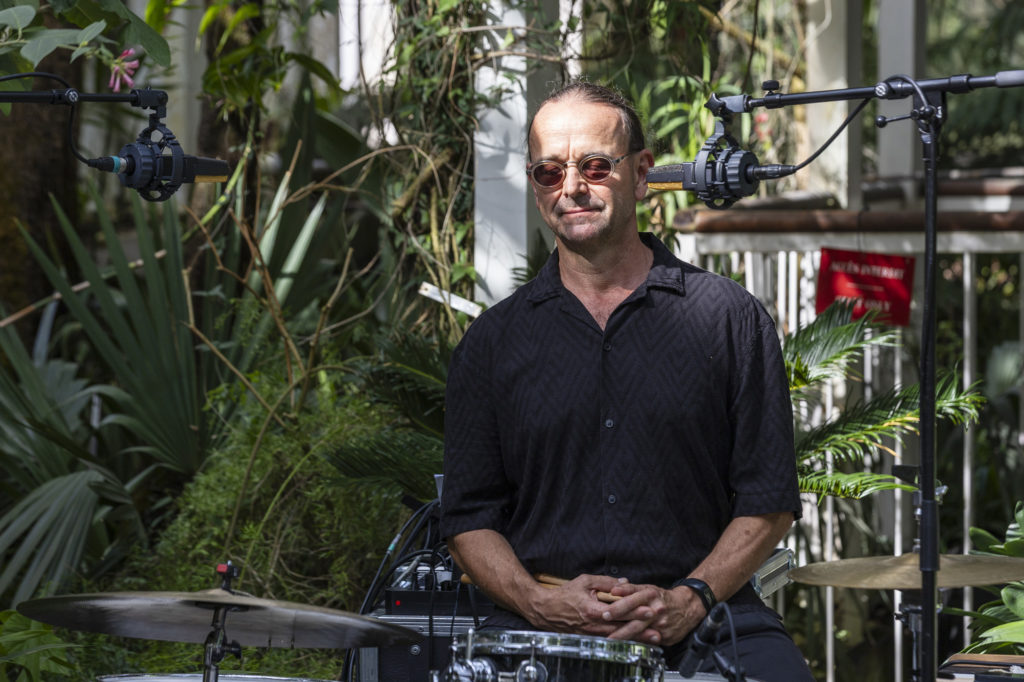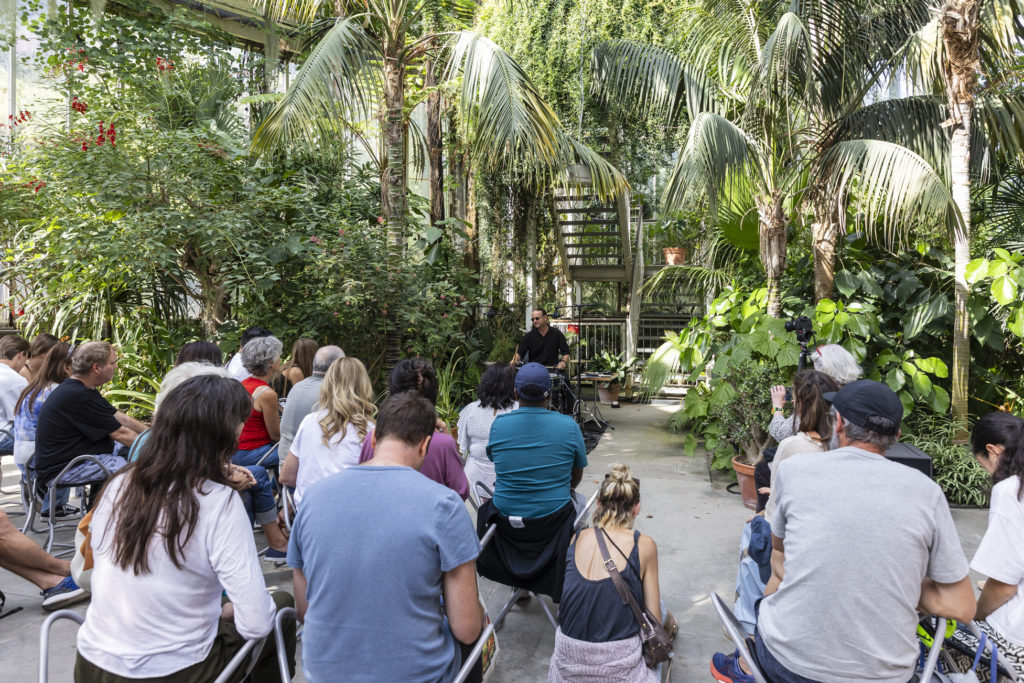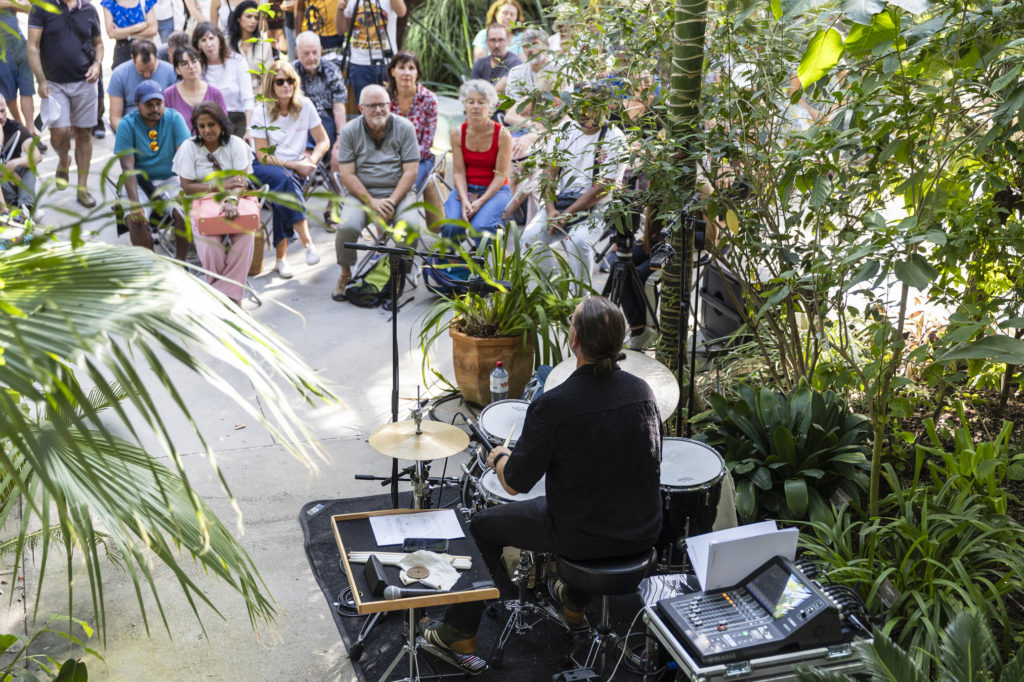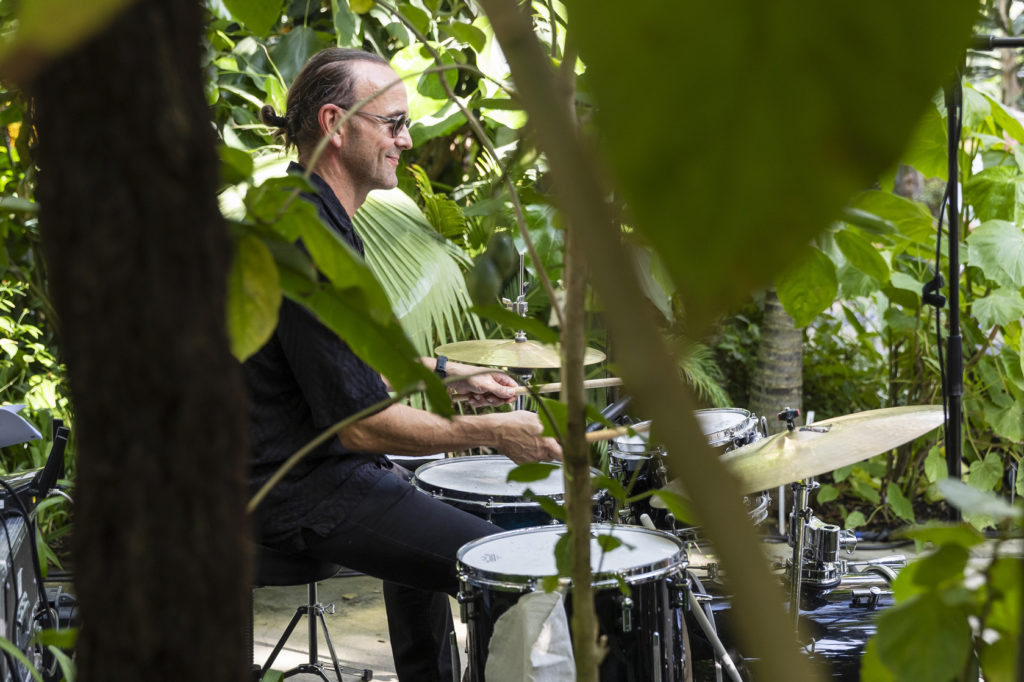Walter De Maria, Lucas Niggli
Ocean Music (1968) + Cricket Music (1964)
Walter De Maria, a key figure in Minimalism and Land Art, was also a pioneering force in the renewal of music. Trained as a drummer, he was one of the original performers of Trio for Strings (1958) by La Monte Young – a foundational piece of minimalist music – alongside the composer himself and Terry Riley. De Maria was also part of The Primitives, the short-lived group with Lou Reed, John Cale and Tony Conrad that would later evolve into The Velvet Underground.
In 1964 and 1968, he composed two works combining nature recordings with percussion: Cricket Music (1964) and Ocean Music (1968). These pieces mark the central role of sound in De Maria’s early artistic practice. They foreshadow his move from studio-based sculpture toward environmental art and hint at a sonic paradigm that anticipates what we now call site-specific installations. Cricket Music unfolds from a percussive rhythmic structure into the continuous natural drones of crickets and ambient outdoor soundscapes. In contrast, Ocean Music begins with the steady amplification of ocean waves, gradually giving way to irregular drum beats. Together, these compositions prefigure the complex and often ambivalent relationship between art and nature explored by the Land Art and Earth Art movements.
In September 2024, Swiss percussionist Lucas Niggli performed Ocean Music and Cricket Music at the Bechtler Stiftung in Uster, home to Walter De Maria’s monumental permanent installation The 2000 Sculpture (1992). For this performance, Niggli meticulously recreated the original field recording sequences, as the archival tapes were no longer usable.
Download the leaflet for Preamble II – Sound and Nature (french version)






Credits
Walter De Maria: composition
Lucas Niggli: reconstruction of tapes, performance
Joschka Weiss and Jean-Baptiste Bosshard: sound engineering

